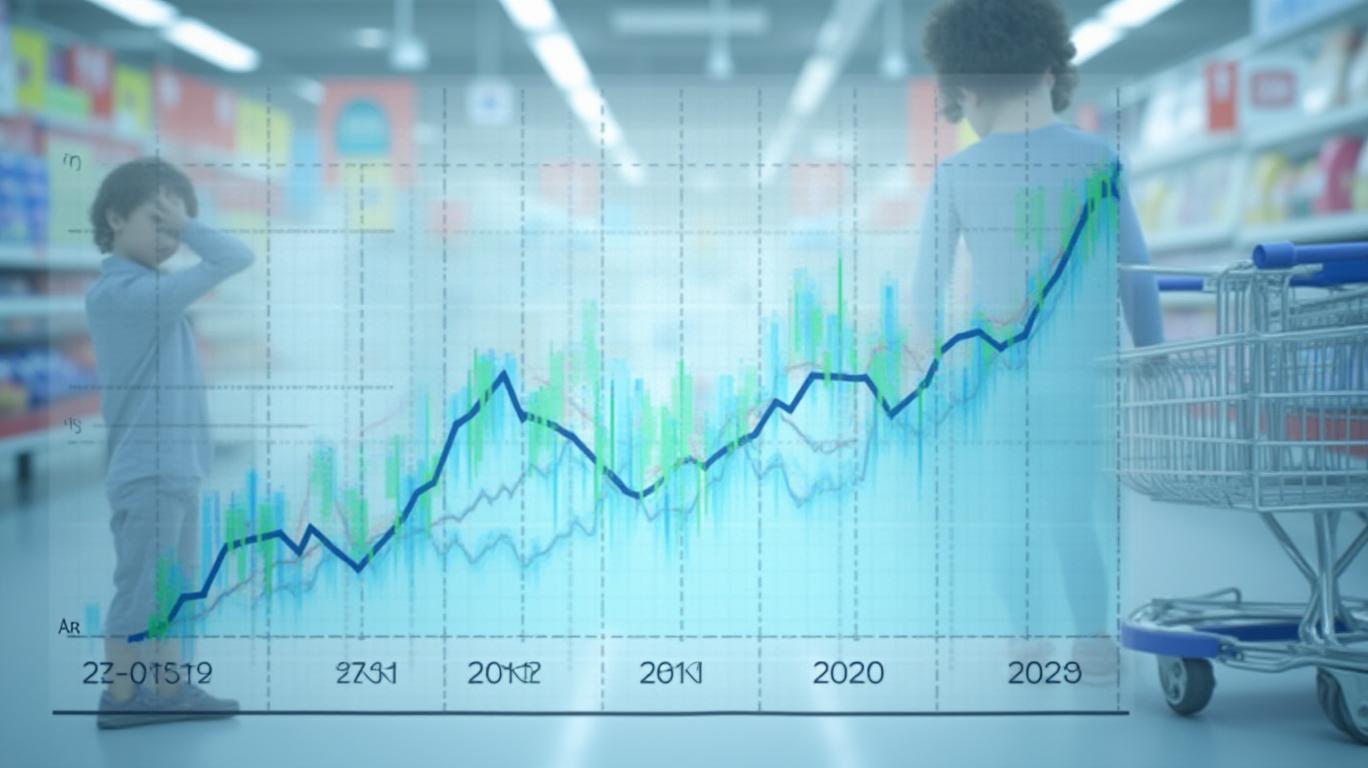UK Consumer Confidence: A Fragile Spring Amid Brewing Inflation Storms?
The UK consumer confidence index inched upward in May 2025, rising to -20 from April’s dismal -23, offering a flicker of hope after months of decline. But beneath the surface, inflationary pressures and geopolitical risks are creating a precarious balance between short-term optimism and long-term vulnerability. For investors, this is a critical moment to dissect which retail sectors can weather the storm and which are primed for a reckoning.

The Short-Term Uptick: Weathering the Storm?
The May rebound in confidence was driven by the Bank of England’s May 8 interest rate cut to 4.25%, the first in over a year, and a temporary pause on U.S. tariffs that had stoked inflation fears. Consumers’ outlook on personal finances improved by five points, while the Major Purchase Index rose to -16—a modest but notable shift. Retailers in sectors like apparel and DIY benefited immediately.
Clothing stores saw a 1.7% sales surge in March 2025, fueled by unseasonably warm weather and the third-sunniest March on record. This resilience highlights a key short-term investment angle: weather-sensitive sectors like apparel and outdoor goods could continue to outperform if summer remains mild.
The Long-Term Threat: Inflation’s Shadow
But the data also reveals cracks. The GfK report notes that confidence remains 16 points below its long-term average, with fears of a 3.5% inflation spike in April 2025. Food prices, in particular, are a ticking time bomb: projections suggest they could hit 4.9% in 2025 due to rising labor costs and Brexit-era regulatory burdens.
Supermarkets are already feeling the pinch. Food store sales fell 1.3% in March 2025 as households cut back on non-essentials. This sector faces a double whammy: higher input costs and a shift toward “big shop” strategies, where consumers buy in bulk to minimize trips and spending.
Electronics and durables, meanwhile, are caught in a vise. While non-food stores saw a 1.7% sales boost in March, this appears driven by seasonal demand for outdoor gear, not tech. Tariffs on Chinese imports—suspended for 90 days—threaten to reignite price wars, making big-ticket items like TVs or appliances risky bets.
The Crossroads for Retail Investors
The divide between sectors is stark. Apparel and discount retailers (e.g., Primark) are benefiting from cost-conscious shoppers prioritizing affordable fashion. Specialty food stores (e.g., Waitrose) are stealing market share from traditional supermarkets. But big-box retailers (e.g., Tesco, Sainsbury’s) face margin squeezes from rising labor and logistics costs.
Investment Strategy: Play Defense, Target Resilience
- Short-Term Plays:
- Apparel: Invest in companies with strong seasonal inventory and exposure to weather-driven demand (e.g., Next).
Discount Retail: Firms like Primark, which thrive in cost-cutting environments, could outperform.
Long-Term Caution:
- Avoid Overvalued Durables: Steer clear of electronics and home goods until tariff risks subside.
Monitor Inflation: Track food inflation closely—any spike above 4% could trigger a broader consumer pullback.
Hedge with Essentials:
- Health & Beauty: Sectors with inelastic demand (e.g., pharmacy chains) offer stability amid volatility.
The Bottom Line
UK consumers are cautiously optimistic but deeply uncertain. The May bounce is a reprieve, not a recovery. Investors must prioritize sectors with pricing power, resilience to inflation, and exposure to short-term tailwinds like weather. The long-term risks—tariffs, wage growth, and Brexit’s lingering costs—are too potent to ignore.
The time to act is now. Ride the short-term waves, but keep one eye on the horizon—where inflation’s storm clouds are gathering.

Comments
No comments yet